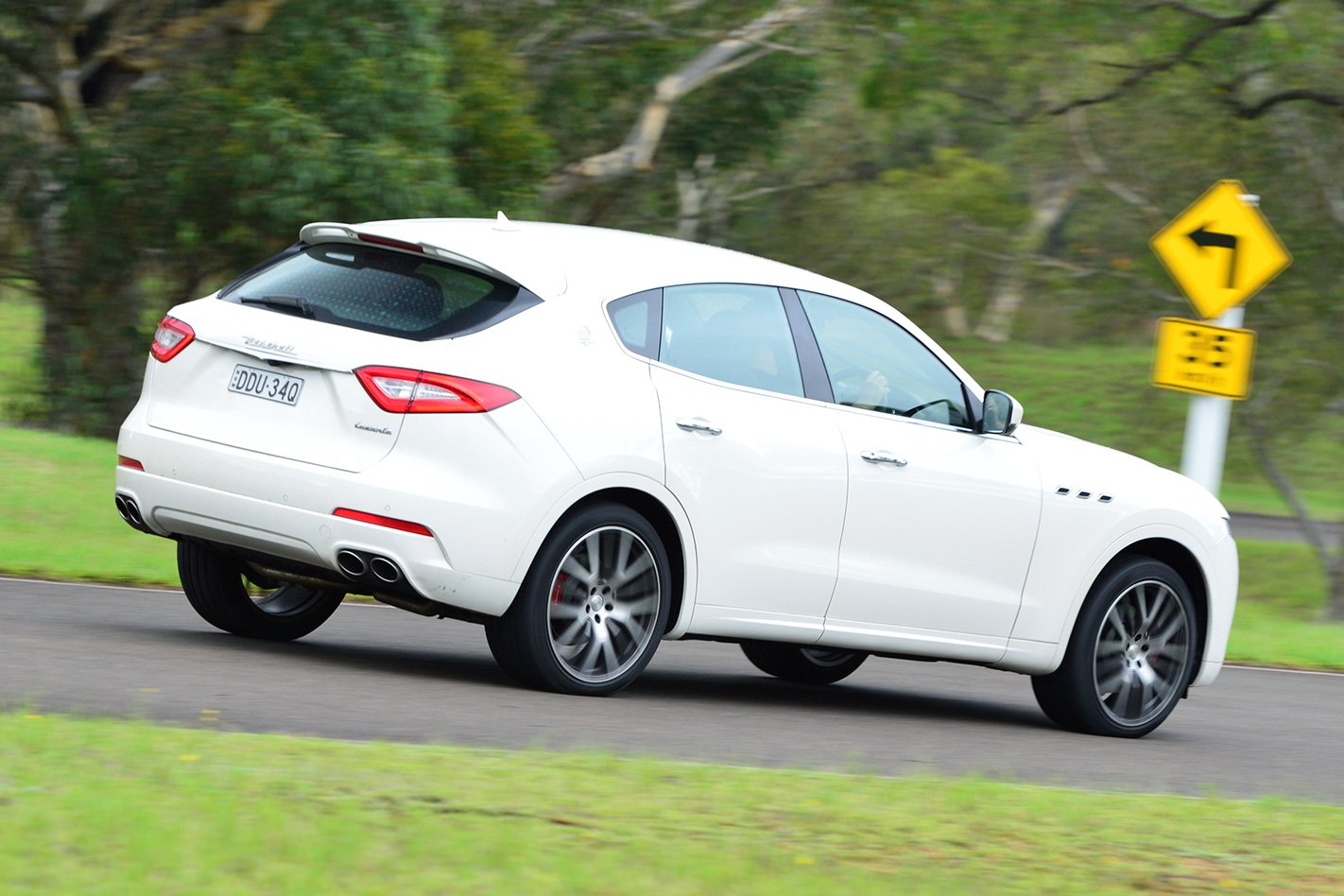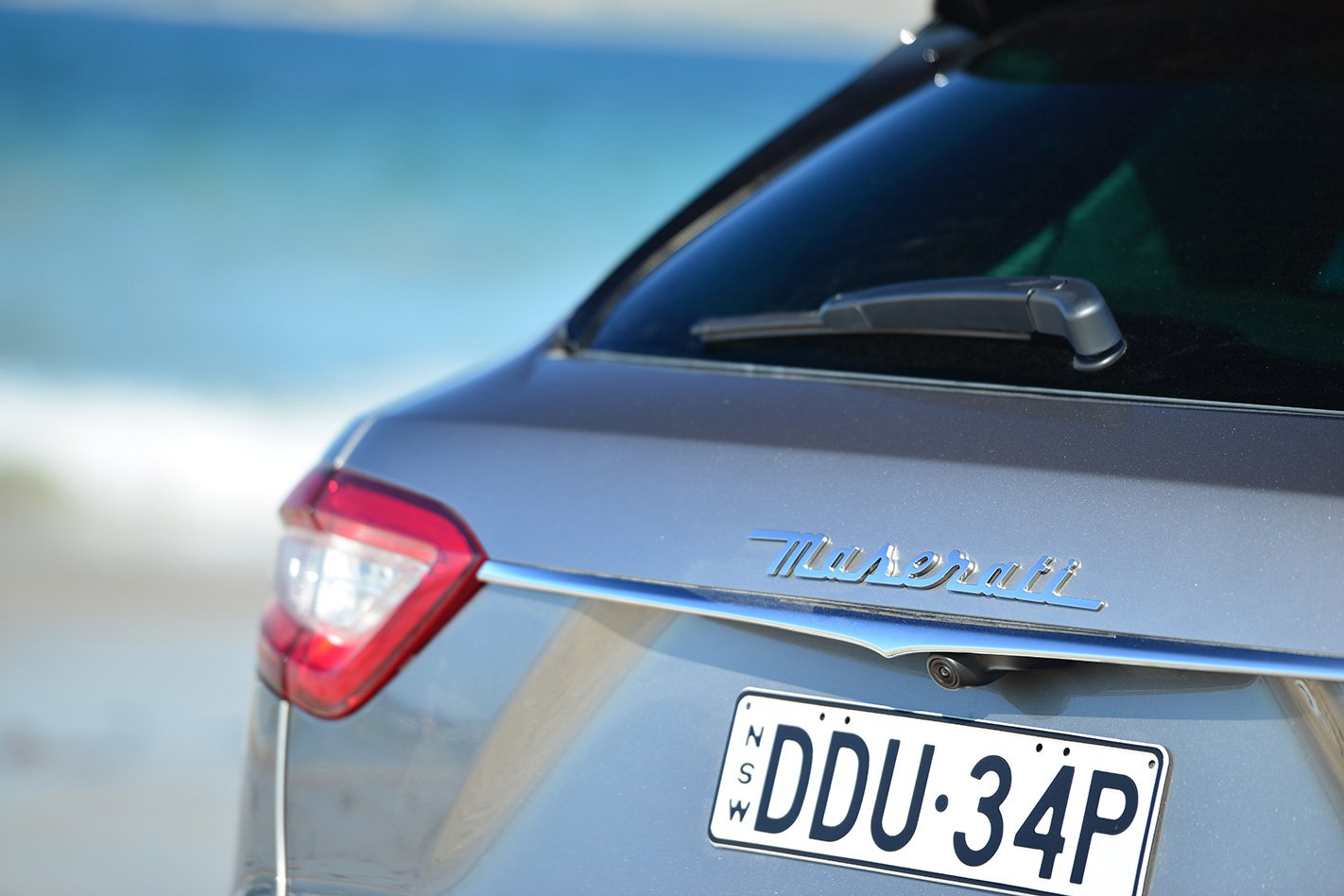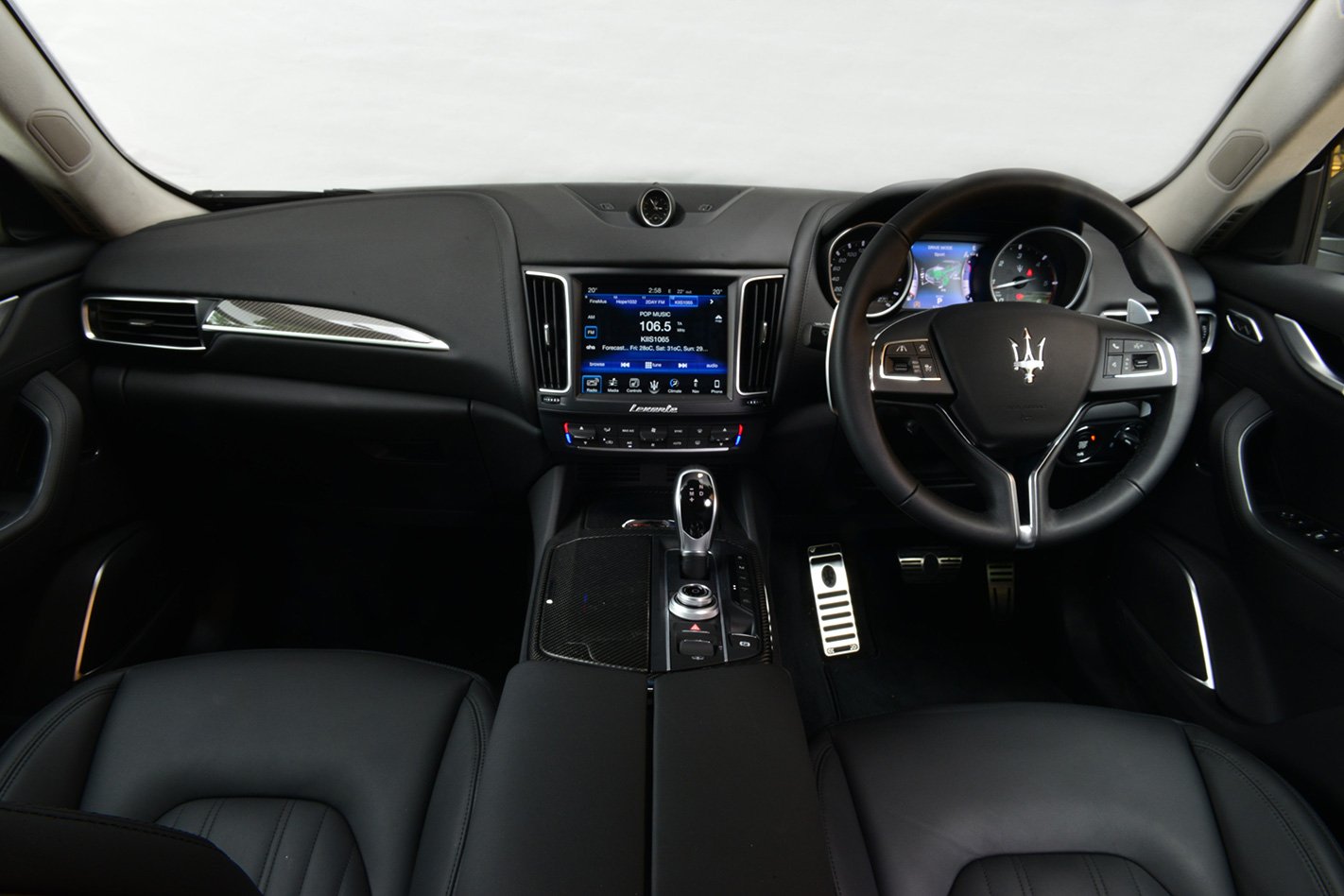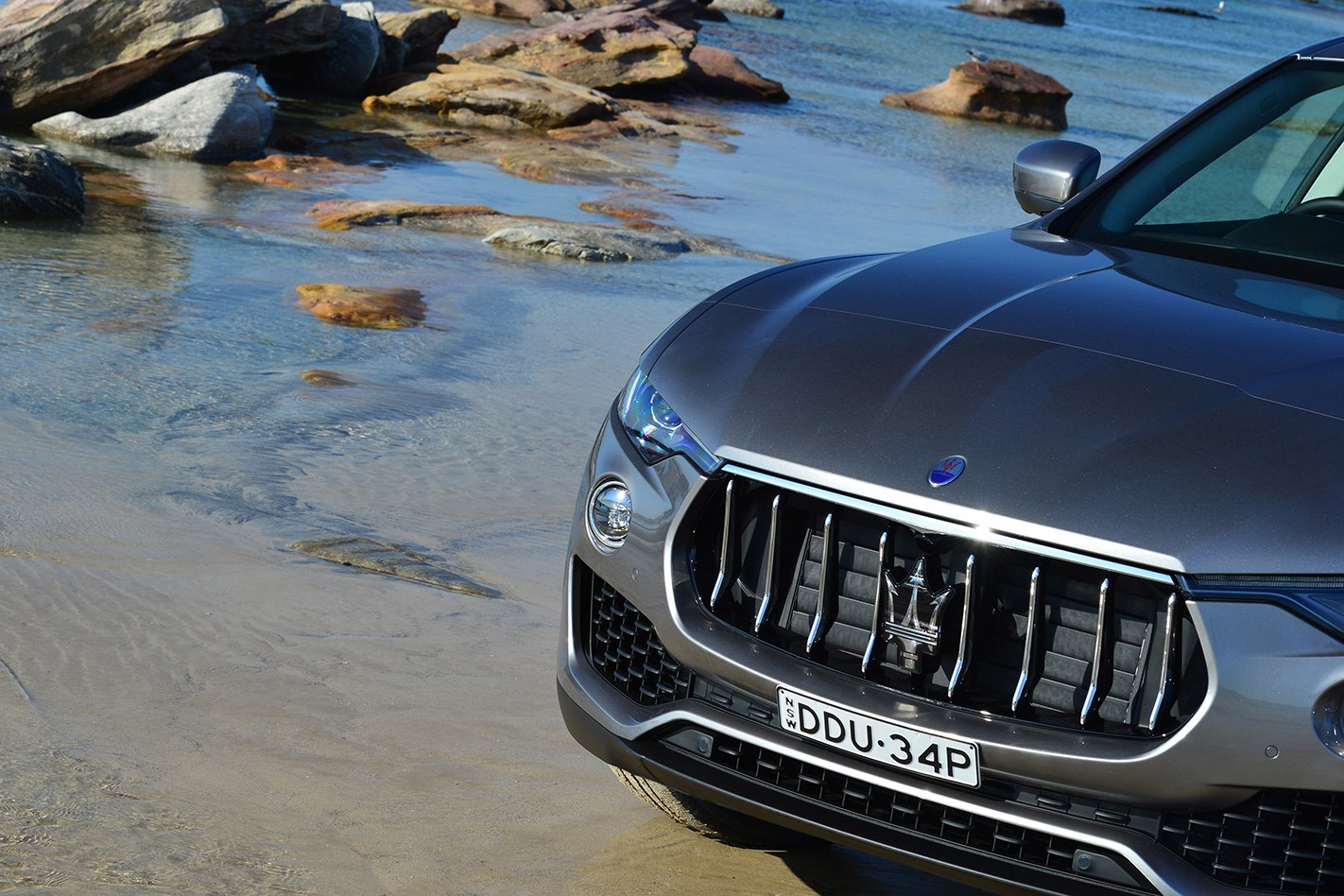MASERATI now has a car to take on the might of the Porsche Cayenne. Taking up the Italian sports car brand’s fight is the Levante, the first-ever high-riding model from the Italian powerhouse.
WHAT IS IT? The Maserati Levante is the first-ever SUV from the Italian sportscar brand. It joins an already crowded market hungry for high-riding luxury.
WHY WE’RE DRIVING IT Because if Zegna ever designed a track suit, it would look like this.

THE WHEELS VERDICT Sharp in looks, but a bit blunt in performance, the Levante doesn’t quite live up to expectations. Maserati’s SUV is a bit like David Beckham in a suit and tie; everything looks good until it opens its mouth to speak.
PLUS: Sharp exterior styling; comfortable, cosseting interior; good grip; decent fuel economy MINUS: Pricy when measured against competition; diesel-only; flatulent exhaust note
THE WHEELS REVIEW MASERATI. It’s a name etched in a rich history of racing and sports cars, with beautiful, shapely, flamboyant models designed to turn heads and generate envy. It’s something of a sad indictment, then, that even it eventually has to bow to the demands of the market.
The reality is, high-riding SUVs are in demand, and a growing part of even the luxury market. If Maserati was to survive into its second century, it would need to redefine itself. With the Maserati Levante, it sort of has.

Even before we crack a door (unlocking it via a beautifully crafted, large and heavy remote key), there’s a problem. The only engine developed for right-hand drive is the 3.0-litre diesel, with the lack of the 3.0-litre petrol V6 severely limiting the Levante’s market appeal.
From the front Levante is unmistakably Maserati, the big, baleen whale mouth, guard-mounted air vents and the swept, slash-like headlights giving it a strong family connection. Big hips and a thin D-pillar down the back give it distinctive coupe lines.
Levante is built on the same platform that underpins the Ghibli and Quattroporte sedans, and that shows. Open the driver’s door with its frameless window, and there’s a huge expanse of skin hanging under it that wraps around to the SUV’s rocker cover. However, the aperture it opens to is sedan-small, not SUV-large.

The cabin around the driver is functional, although the large, square touchscreen mounted high on the dash below an analogue clock – the de facto luxury car benchmark – has a lot going on, with rows and rows of virtual buttons controlling everything from the sat-nav to the surround-view cameras.
The diesel engine isn’t a Maserati strong suit. Sourced from fellow Italian VM Motori, it’s laggy on step-off and sounds much like tofu tastes. Punch the Sport button twice to beef up the suspension and sharpen the throttle, and it adds a slow, resonating “bom-bom-bom” at idle and a sound like radio static to the exhaust note under load, giving the illusion it has a higher cylinder count than just six.
The ride borders on firm around town, but comes more alive as speeds increase. The Levante, boasting a 50:50 weight distribution and lowest-in-class centre of gravity, transfers the weight of its 2205kg bulk quite well, showing only a hint of headshake through corners. It’s a shame, then, that the steering – hydraulic rather than electrically assisted – lacks decent feel, suffering from just a little too much on-centre vagueness.

A flaw of the Maserati SUV, though, is pricing. Our base car costs $139,990 before on-roads, featuring a leather interior, dual-zone climate control, 19-inch alloys, a powered tailgate, heated 12-way power-adjust front seats, adaptive cruise control, blind-spot warnings, and front and rear parking sensors linked to a reversing camera.
Our test car added the sport pack that gives a different interior finish with more heavily bolstered sports seats, 21-inch wheels, steering column-mounted paddle shifters, a more premium Harman Kardon audio system, a bigger spoiler extending from the tailgate and red brake calipers.
It also had more swathes of leather; carbonfibre trim; Maserati tridents stitched into the front and rear outboard seats; a remote tailgate that opens at a sweep of a foot under the rear bumper; and heated rear seats.
That all adds up to an extra $48,504 over the base car. For a $188K-plus package lacking a more appealing petrol-engined option, it struggles against more keenly priced competition.






